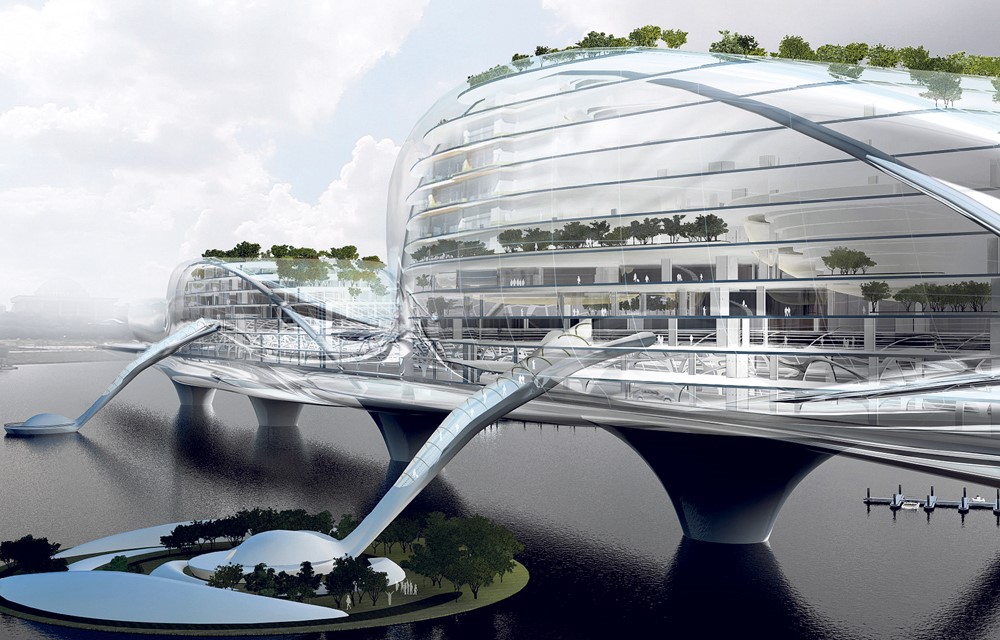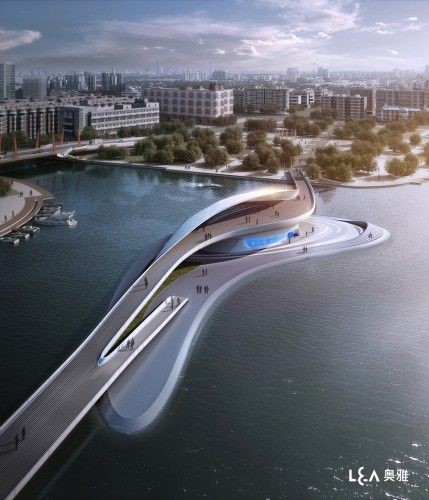Τhe studio focuses on bridges as architectural gestures aiming to connect the two sides of a natural or artificial obstacle (river, gorge, highway). More specifically, the studio will tackle the design of a habitable bridge that, besides being merely a passageway, it will accommodate uses and different "habitation" experiences depending on the place in which it is placed. Bridges, from antiquity to present times, have often been landmarks, both in the urban context as well as in the natural landscape. The studio will explore the concept of connectivity, movement and stop, as well as with geo-environmental parameters that will feed the design process. During the initial stage of the studio, students will research and study examples from the international architectural scene, they will using digital tools to experiment with geometric and topological transformations with the aim to design and deliver an architectural proposal that combines connectivity with habitation.
Digital design tools will be an important part of the studio, students will practice and expand their skills through a variety of exercises during the semester, incorporating this knowledge into the final architectural composition of the bridge. The aim is to use digital media not only as a design tool, but also as a tool for morphogenesis and architectural thinking, introducing new experimental methods into the design process.

Figure 1: ‘Paik Nam June Media Bridge’ in Seoul, Korea designed by Planning Korea. Image source.
The aim of the course is to design a habitable bridge that will connect, add to and transform the existing urban, suburban or natural landscape. Through a series of exercises students will explore the concept of connectivity, movement and habitation, the typologies of bridges, and the morphogenic processes through digital representations.
The building program will emerge from the research of the initial stage, in order to respond to the needs for connection and habitation that is relevant to the study area. It may range from a Motel over a motorway, a restaurant, a tourist information center, shops, Internet cafes, a boat hire station (if it is a river), etc. The emphasis will be placed on the design process, using digital design tools, and exploring spatial transformations that respond to the design intent.

Figure 2: New Concept Bridge in Wuxi Xidong Park in China by L&A Design Group. Image source.
Students will work in small groups. The evaluation will be based on exercises during the semester (research, digital experiments, etc.) and on the final deliverable that will be a fully articulated and documented design proposal for a habitable bridge (floor plans, views, intersections, 3D representations, animations).
Betsky, A., The Complete Zaha Hadid, Thames & Hudson, 2016.
Hensel, M., Menges, A. (eds). Morpho-Ecologies: Towards Heterogeneous Space In Architecture Design, AA Publications, 2007.
Hensel, M., Menges, A. (eds). Versatility and Vicissitude: Performance in Morpho-Ecological Design,Academy Press, 2008.
Kolarevic, B. (ed.), Architecture in the Digital Age: Design and Manufacturing. 1 edition. Taylor & Francis, 2004.
Leach, N. (ed.), Designing for a Digital World, Academy Press, 2002.
Long, K. (ed.), Hatch: The New Architectural Generation, Laurence King Publishing, 2008.
Lynn, G., Archaeology of the Digital, Ram Publications, 2014.
Picon, A., Digital Culture in Architecture, Birkhäuser Architecture; 2010.
Rahim, A. & Jamelle H. (eds), Elegance, Academy Press; 1 edition, 2007.
Sakamoto, T. (ed), FROM CONTROL TO DESIGN, Actar, 2008.
Spuybroek, L. (ed), Research & Design: The Architecture of Variation, Thames & Hudson, 2009.
